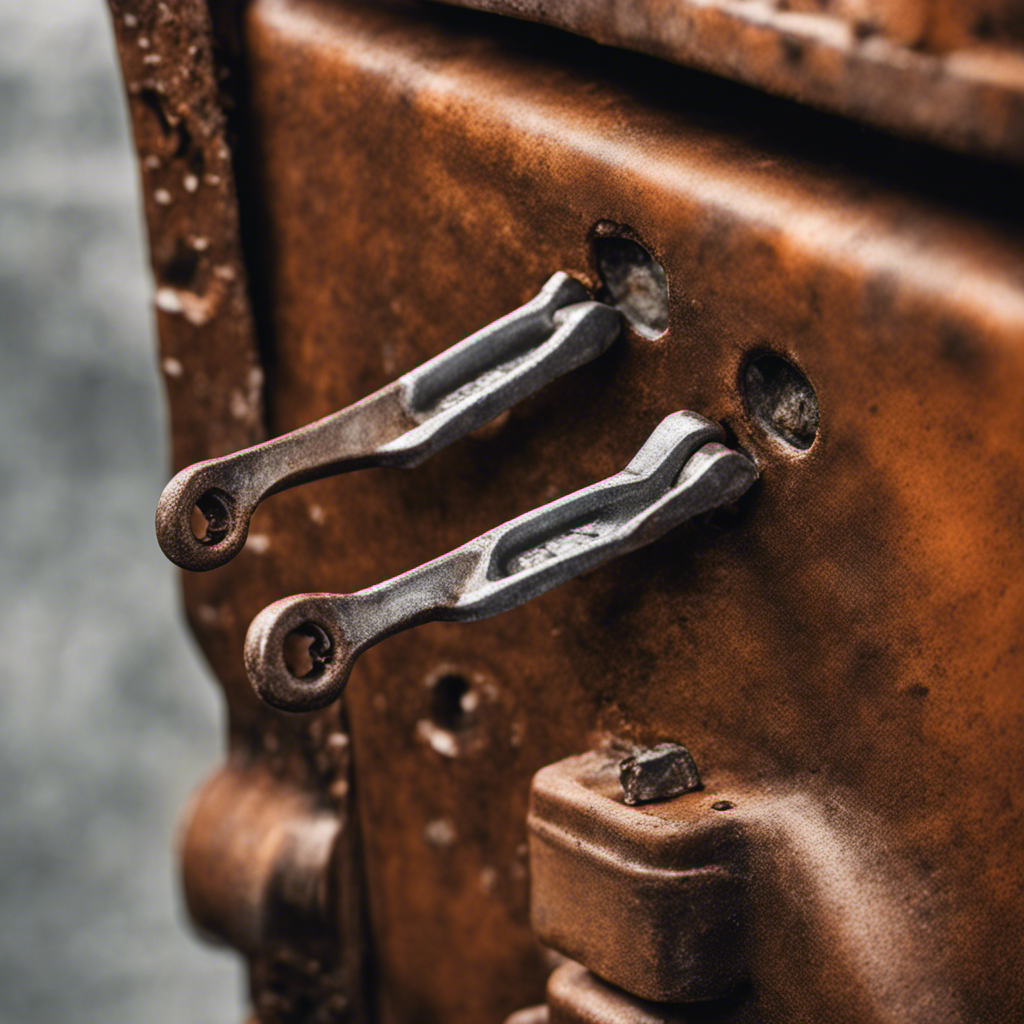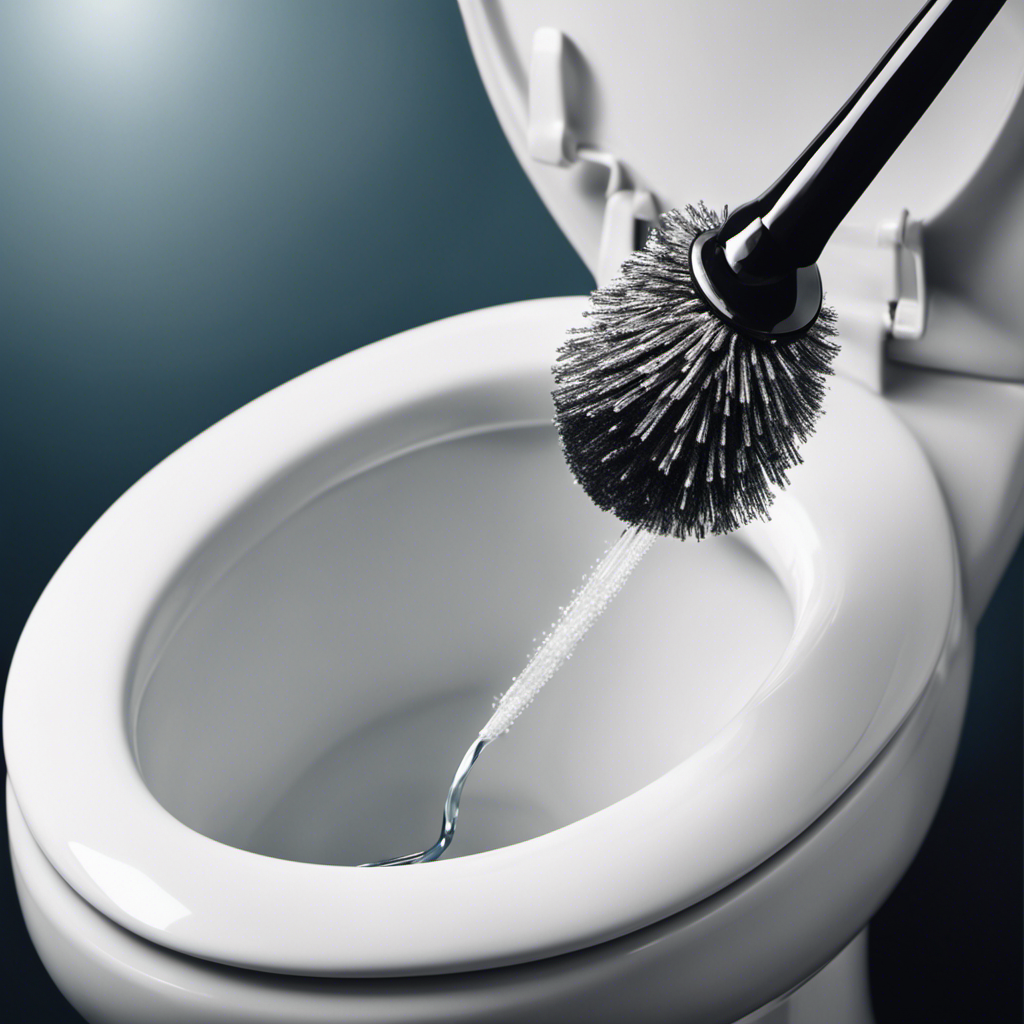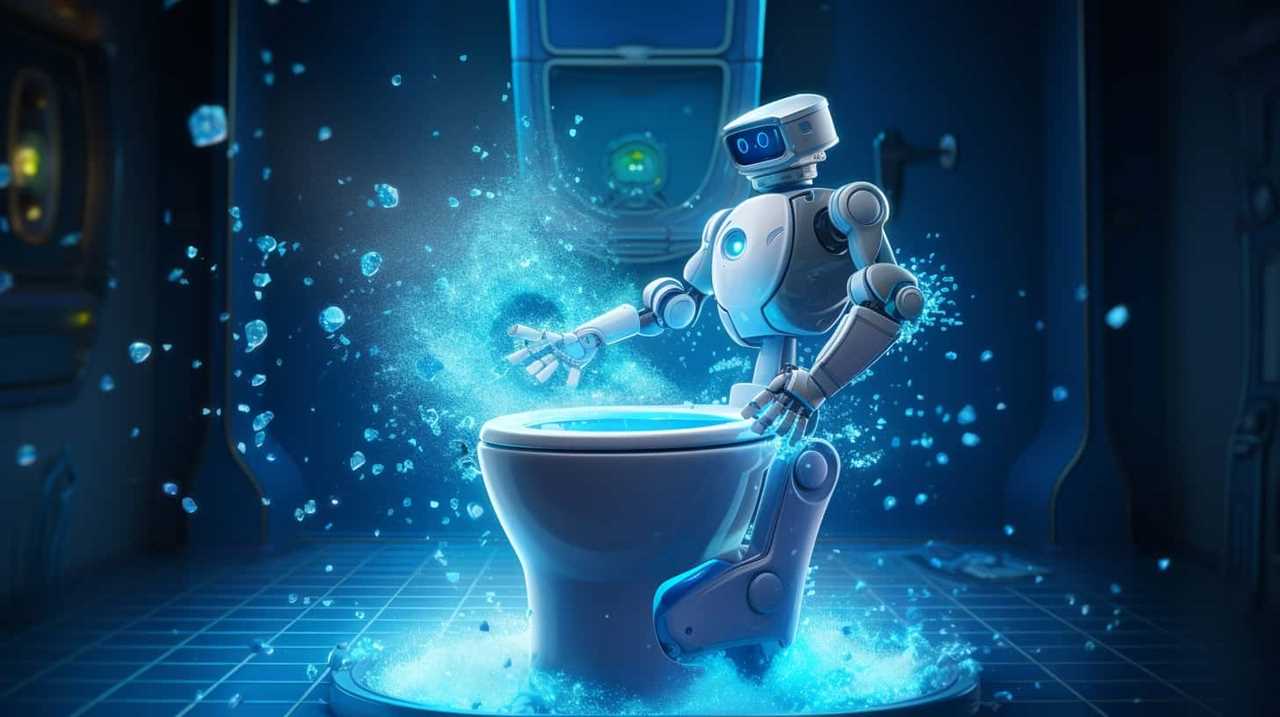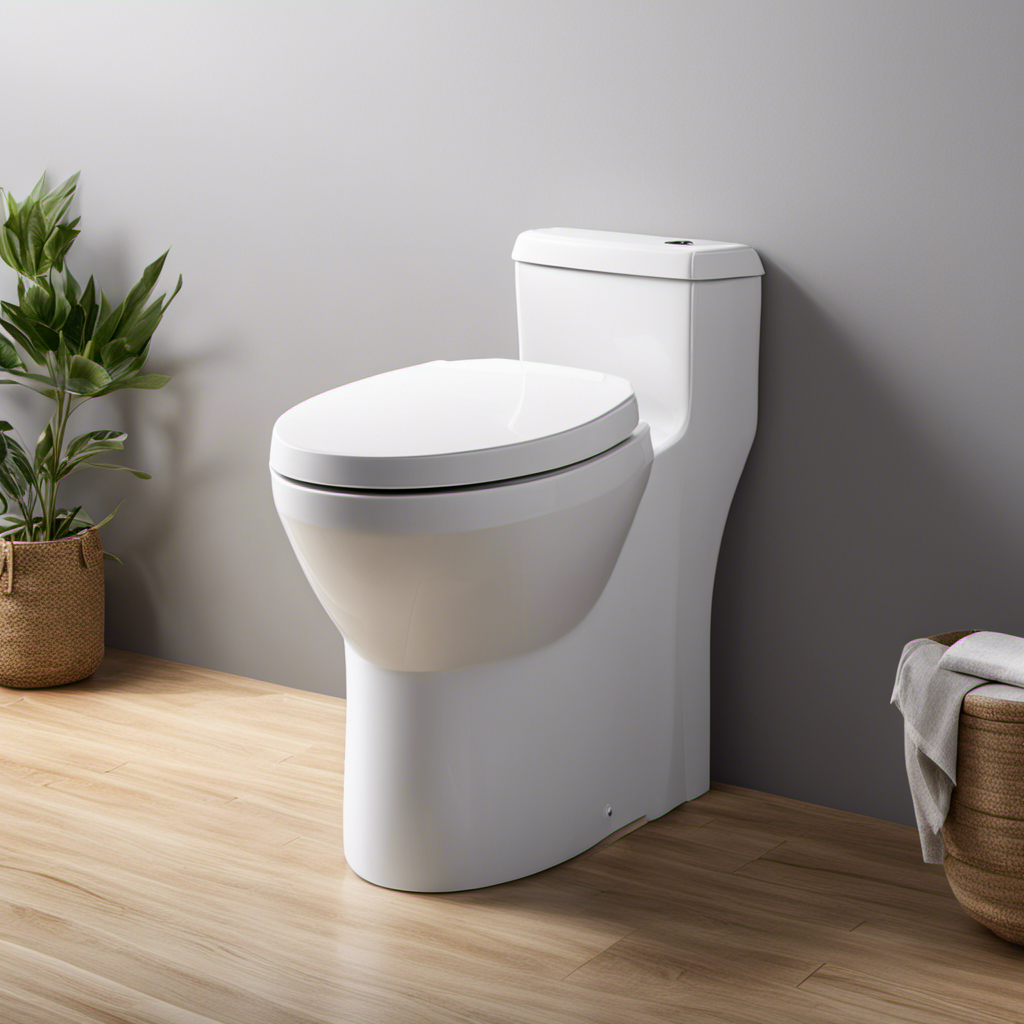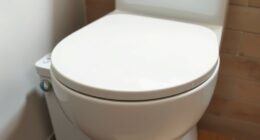Rusted toilet tank bolts can be a stubborn nuisance, causing potential damage to your toilet tank. But fear not! This step-by-step guide will walk you through the process of removing those pesky bolts with ease.
From shutting off the water supply to unscrewing or cutting the bolts, this guide provides detailed instructions and helpful tips.
Don’t let rust hold you back – follow this guide and say goodbye to rusty toilet tank bolts for good!
Key Takeaways
- Close the shut-off valve and turn off the water supply before starting the process.
- Flush the toilet and remove the tank lid to access the rusted bolts.
- Apply a penetrating oil to the bolts to help loosen them and reduce friction.
- If the bolts cannot be unscrewed, use tools like a hacksaw or bolt cutter to cut and remove them.
Preparation and Water Shut-off
The homeowner closes the shut-off valve to prevent water from entering the tank.
Regular maintenance is crucial for toilet tank bolts to ensure proper functioning and prevent potential issues.
Common signs of rusted toilet tank bolts include visible rust on the bolts, leakage around the bolts, and difficulty in tightening or loosening them.
To identify rusted bolts, inspect the bolts visually and check for any signs of corrosion or discoloration.
Additionally, if there is water leakage around the bolts or if the bolts feel loose or wobbly, it may indicate rusted bolts.
Regularly checking and maintaining the condition of toilet tank bolts is essential to avoid leaks, cracks, and other damages to the tank.
Flushing and Accessing the Bolts
After flushing, the user can remove the tank lid to access the bolts located at the bottom of the toilet tank.
To prevent rust on toilet tank bolts, it is important to use corrosion-resistant hardware like brass bolts. These bolts are resistant to corrosion and are suitable for the humid environment of the toilet tank.
When it comes to removing rusted bolts, there are several tools that can be used. A mini hacksaw, bolt cutter, or reciprocating saw can be used to cut the bolts if unscrewing is not possible.
It is important to be cautious while using these tools to avoid damaging the surrounding area or injuring oneself.
Removing Remaining Water and Cleaning
To effectively clean the toilet tank, the user should wipe any remaining water with a towel or sponge. This step is essential to prevent any moisture from lingering, which can contribute to rust formation on the tank bolts.
After removing the water, it is crucial to clean the tank’s bottom, especially if it is made of plastic, as it allows for easier access to the rusted bolts.
Common mistakes to avoid when removing rusted toilet tank bolts include using excessive force, which can lead to damage to the tank or injury to the user. It is also important to avoid using tools that are not suitable for the job, such as a hammer, which can cause further damage.
Taking these precautions will ensure a successful removal process and prevent rust formation on toilet tank bolts.
Applying Penetrating Oil
Using a penetrating oil like CRC Screwloose helps to break down rust on the bolts and reduce friction. This oil contains lubricants that penetrate the rust and loosen the bolts, making them easier to remove.
The benefits of using penetrating oil for rusted bolts are numerous. Firstly, it saves time and effort by effectively loosening the rust and allowing for easy unscrewing of the bolts. Additionally, it helps to prevent damage to the surrounding area as it reduces the need for excessive force or aggressive tools.
Alternatives to penetrating oil for loosening rusted bolts include using heat to expand the metal, using a rust dissolver or vinegar to dissolve the rust, or using a combination of methods such as applying heat and tapping the bolts with a hammer. However, penetrating oil remains a popular and effective choice due to its ability to quickly break down rust and reduce friction.
Unscrewing the Bolts
With a flathead screwdriver and pliers in hand, one can easily unscrew the bolts by holding the nut and turning the bolt counterclockwise.
However, if this method does not work, there are alternative methods for unscrewing rusted toilet tank bolts.
One alternative is using penetrating oil, which helps to break down the rust and reduce friction. Applying the oil to the bolts and waiting for it to penetrate for about 10 minutes can make unscrewing easier.
Another method is cutting the bolts if unscrewing is not possible. Tools like a mini hacksaw, bolt cutter, or reciprocating saw can be used to carefully cut and remove the rusted bolts.
Common challenges when unscrewing rusted bolts include limited access to the bolts, tight or corroded nuts, and stripped or damaged bolt heads.
Troubleshooting tips include using lubricants, applying heat to the bolts, or using specialized tools for added leverage.
Cutting the Bolts if Unscrewing Is Not Possible
When unscrewing rusted toilet tank bolts is not possible, alternative methods such as cutting the bolts can be employed. This is a common challenge faced by homeowners when dealing with rusted bolts.
One solution is to use tools like a mini hacksaw, bolt cutter, or reciprocating saw. The cutting tool should be placed horizontally between the nut and the tank, and back and forth sawing motions should be used to carefully cut and remove the rusted bolts. It is important to exercise caution to avoid damaging the surrounding area or injuring oneself during this process.
Once the rusted bolts are successfully removed, new bolts can be installed using a flat screwdriver. This method provides an effective solution for removing rusted toilet tank bolts when unscrewing is not possible.
Frequently Asked Questions
Can I Use Any Type of Penetrating Oil to Loosen Rusted Toilet Tank Bolts?
Yes, any type of penetrating oil, like WD-40, can be used to loosen rusted toilet tank bolts. Vinegar can also be used to remove rust from the bolts, as it helps dissolve the rust.
How Can I Prevent Rust From Forming on Toilet Tank Bolts in the Future?
To prevent rust from forming on toilet tank bolts in the future, one can use effective rust prevention methods. These methods include purchasing corrosion-resistant hardware like brass bolts, which are durable and suitable for humid environments.
Is It Necessary to Remove the Tank Lid in Order to Access the Bolts?
Yes, it is necessary to remove the tank lid in order to access the bolts. There are no alternative methods for accessing rusted toilet tank bolts without removing the tank lid.
What Should I Do if the Rusted Bolts Are Too Difficult to Unscrew Even With Penetrating Oil?
If the rusted bolts are too difficult to unscrew, alternatives can be used. Strengthening the bolts with a rust dissolver or rust converter can make them easier to remove. Another option is using a heat gun to expand the metal, loosening the bolts.
Are There Any Alternative Methods for Removing Rusted Toilet Tank Bolts if I Don’t Have Access to Cutting Tools Like a Hacksaw or Bolt Cutter?
Alternative methods for removing rusted toilet tank bolts without cutting tools include using household items like vinegar or lemon juice to dissolve rust, or applying heat with a blowtorch to loosen the bolts.
Conclusion
In conclusion, removing rusted toilet tank bolts is a crucial task to prevent further damage and ensure the proper functioning of your toilet.
By following this step-by-step guide, you can successfully remove these stubborn bolts and avoid potential leaks or cracks in the tank.
Remember, rusted bolts can be a real headache, but with the right tools and techniques, you can conquer them like a seasoned warrior battling a fearsome dragon.
So don’t let rust hold you back, take action and restore your toilet’s functionality today.
